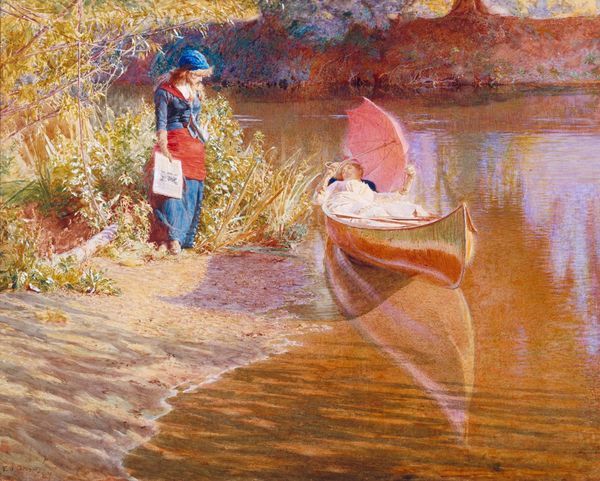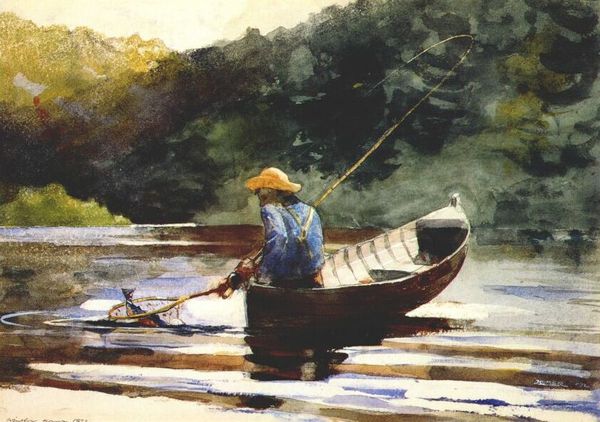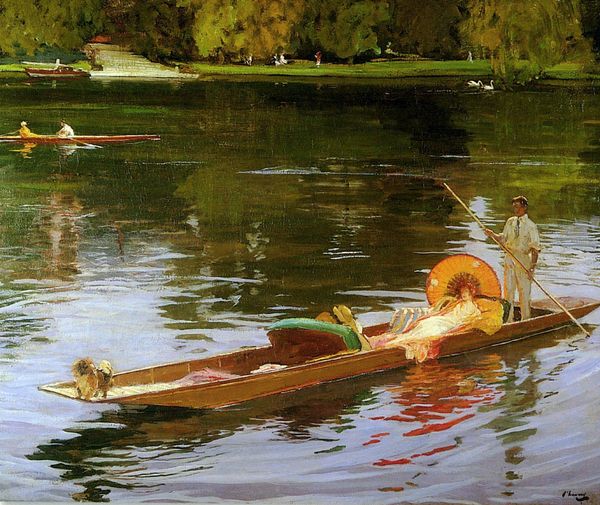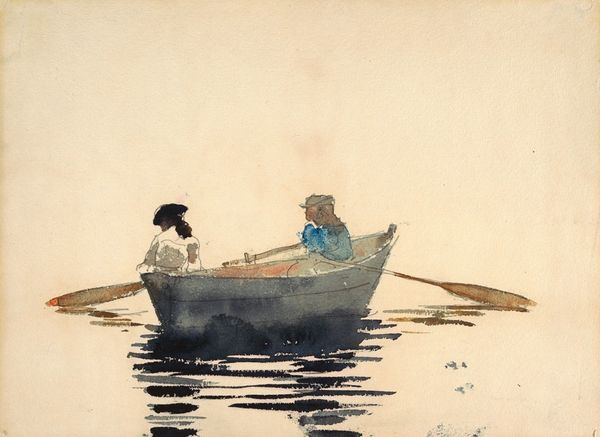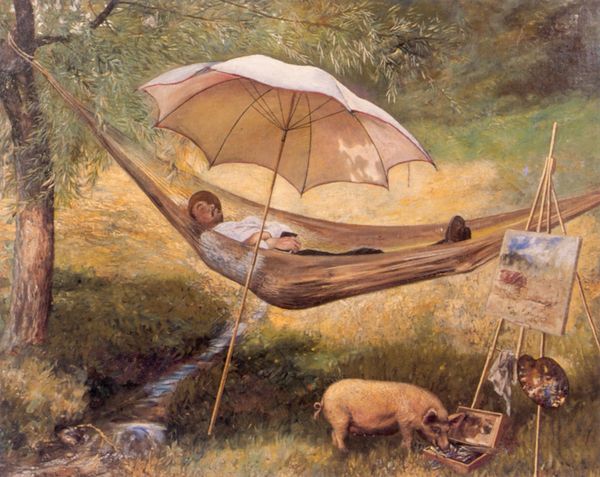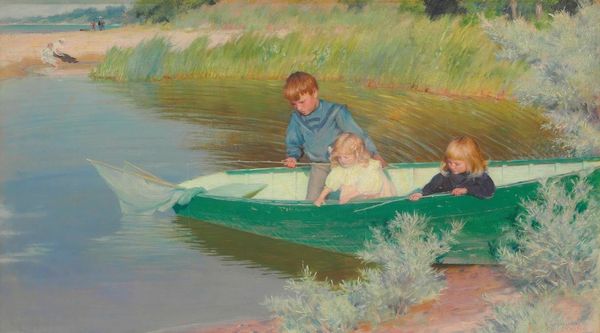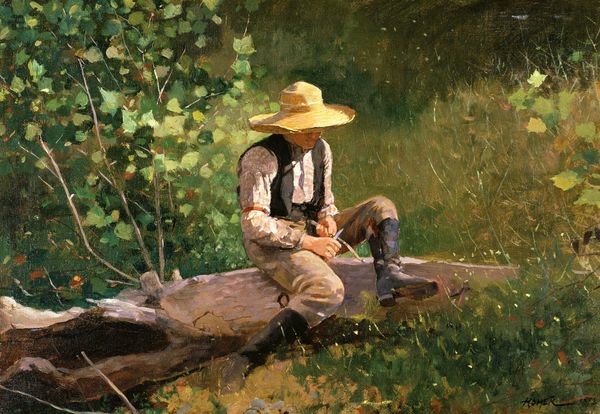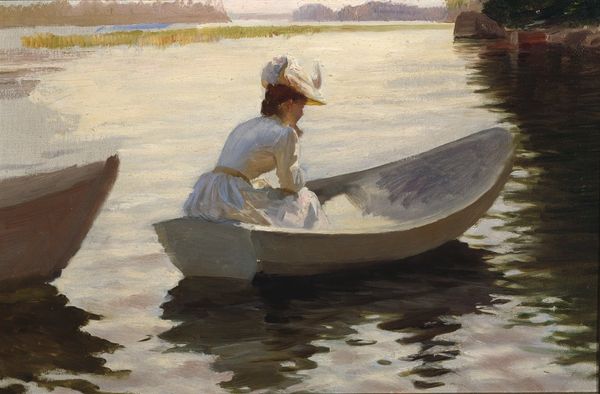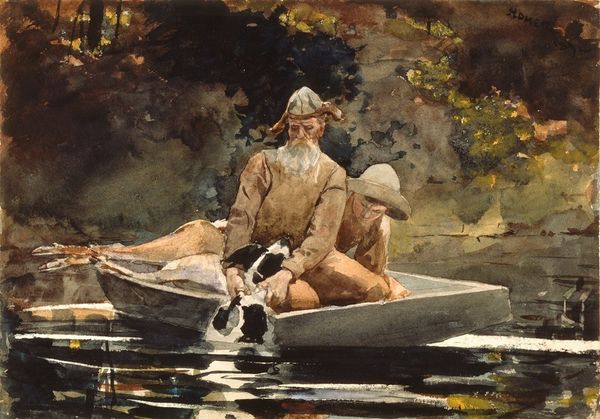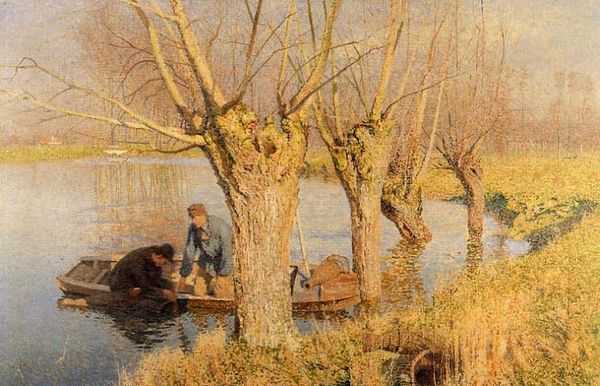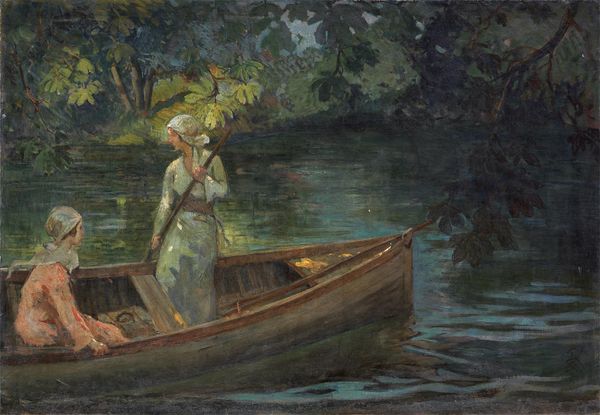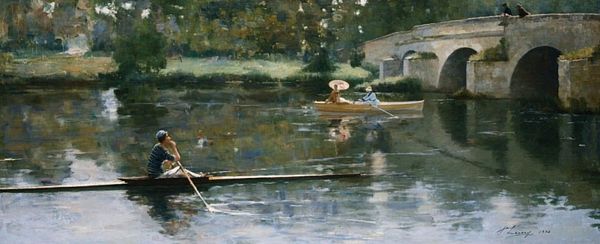
Dimensions: 26 x 40 cm
Copyright: Public domain
Editor: We're looking at "Vichy, a nap in the park on the banks of the Allier" by Maurice Poirson, created around 1880, and rendered in watercolor. It gives off such a tranquil air. The woman relaxing in a hammock seems completely at ease. What strikes you when you look at this piece? Curator: It is evocative of leisure, certainly, but I see more than simple relaxation. Think about Vichy itself in 1880. It was a spa town, attracting elites. This image, though seemingly lighthearted, touches on the politics of leisure and class. How does the painting function as a visual record of the bourgeoisie at play? Editor: That’s fascinating. I hadn't considered the political implications of leisure. Do you think Poirson intended to critique or simply document this scene? Curator: That’s a crucial question, and not easily answered. Consider the role of newspapers in the man’s hands. Is he informed or detached? The dog, the sailboat - they are all subtle elements which suggest the values of the industrial and political elite. What feelings about Vichy society were circulating when this image was produced and who was the audience that saw or collected such watercolors? Editor: It is making me rethink the composition. Before, I saw a pretty snapshot of a lazy summer day. Now, I see layers of meaning, of power dynamics subtly displayed in a seemingly innocuous setting. Curator: Exactly! The "genre painting" of leisure become indicators and transmitters of ideologies. Next time you visit an art museum, examine works with these contextual aspects in mind; it truly expands your vision of how and why it was made, seen, and collected. Editor: I’ll definitely look at art differently from now on!
Comments
No comments
Be the first to comment and join the conversation on the ultimate creative platform.
